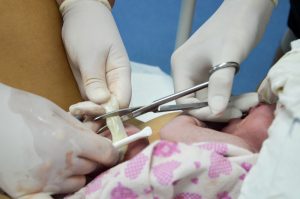
Autism spectrum disorder (ASD) is a neurodevelopmental disorder that affects people’s learning ability and social behavior. In recent decades, awareness of the disorder has increased, particularly in terms of its prevalence and impact on the lives of people diagnosed with ASD. However, various aspects related to the condition are not yet well understood, so there is still much to be researched. Although the exact causes of ASD are unclear, currently available evidence suggests that neuroinflammation is an important factor. Several studies in mouse models of ASD have indicated that polyunsaturated fatty acids (PUFA) and their metabolites play a key role in the development of ASD during pregnancy. PUFA metabolites, which are regulated by cytochrome P450 (CYP), affect fetal development in mice and cause impairments closely associated with symptoms. However, it is still unclear whether this also applies to humans and needs to be investigated further.
Link Between PUFA Metabolites in Umbilical Cord Blood and Symptoms of Autism Spectrum Disorder in Children
To close this knowledge gap, a Japanese research team consisting of Professor Hideo Matsuzaki from the Research Center for Child Intellectual Development at the University of Fukui, Dr. Takaharu Hirai from the Department of Psychiatric and Mental Health Nursing at Fukui University School of Nursing, and Dr. Naoko Umeda from the Department of Maternal and Child Health Nursing at Fukui University School of Nursing, analyzed CYP-PUFA levels in umbilical cord blood samples from newborns. Her study, published in the journal Psychiatry and Clinical Neurosciences, sheds light on the possible causes of ASD.
Prof. Matsuzaki explains the motivation for her study: “CYP metabolism produces both epoxy fatty acids (EpFAs), which have anti-inflammatory effects, and dihydroxy fatty acids or ‘diols’, which have inflammatory properties. We hypothesized that the dynamics of CYP-PUFA metabolites during the fetal period, i.e., lower EpFA levels, higher diol levels, and/or increased EpFA metabolic enzymes, would influence ASD symptoms and difficulties with daily functioning in children after birth.”
Detection at Birth Could Improve Intervention and Support for Children With the Condition
To test this hypothesis, the researchers examined the association between PUFA metabolites in cord blood and ASD scores in 200 children. The cord blood samples were collected immediately after birth and stored accordingly, while the children’s ASD symptoms and adaptability were assessed at six years of age with the help of their mothers. After careful statistical analysis of the results, the researchers identified a compound in the cord blood that may have a strong impact on the severity of the disease, namely 11,12-dihydroxyeicosatrienoic acid (diHETrE), a dihydroxy fatty acid derived from arachidonic acid.
Concentrations of diHETrE, an arachidonic acid-derived diol, in umbilical cord blood at birth were found to have a significant effect on later ASD symptoms in children and were also associated with impaired adaptive capacity. These results suggest that the dynamics of diHETrE during the fetal period are important for the developmental trajectory of children after birth. More specifically, the researchers found that higher levels of the molecule 11,12-diHETre impacted social interactions, while low levels of 8,9-diHETre impacted repetitive and restrictive behaviors. Moreover, this correlation was more specific for girls than for boys. These new findings could be crucial for the understanding, diagnosis and possible prevention of autism. By measuring diHETrE levels at birth, it may be possible to predict the likelihood of children developing ASD. The effectiveness of early intervention in children with ASD is well established, and detection at birth could improve intervention and support for children with the condition, according to the researchers. They add that inhibiting diHETrE metabolism during pregnancy could be a promising way to prevent ASD traits in children, although more research is needed in this regard.
In summary, these findings open a promising avenue for researchers seeking to unravel the mysteries surrounding ASD. It is hoped that a better understanding and early diagnosis can improve the lives of people with ASD and their families.


